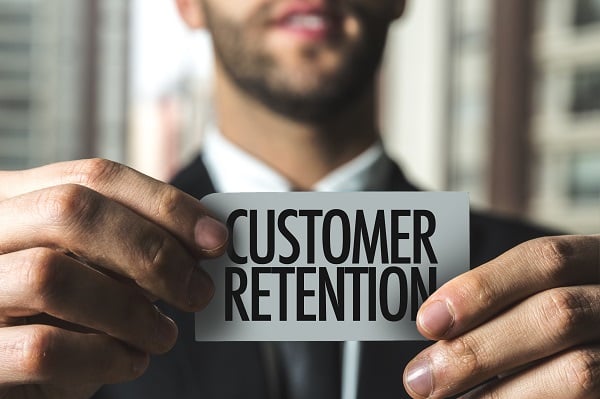Email marketing isn’t dead.
In fact, our survey shows it’s still the most popular and effective lead generation tactic today. And, if you do it right, it can be really effective.
But, like anything, if you do it badly, you’ll get nowhere.
This article will show you the difference between good email and bad email - and how to get it right for your business.
Good email vs bad email
Before we get started, let’s look at what differentiates good email from bad with a quick experiment.
We decided to track email open rates and click-through rates for some of our clients.
Emails that were sent in bulk using new data returned an open rate of 6% and a click-through rate of just 0.6%.
But when emails were fully personalised, sent from the account manager, referred to past purchases and included dynamic content they returned an open rate of 23% and a click-through rate of 6%.
This is ten times the click-through rate of the more generic bulk emails - and 38 times the total number of clicks. Relatively small changes can have a big impact!
If you have technical limitations or lack the right data to fully personalise emails, it won’t be all that uncommon to see low open and click-through rates at the beginning.
But that doesn’t mean emails won’t work for you in the long run. You can work on increasing the quality of your emails and contact data over time.
Lastly, employ a healthy dose of cynicism when looking at open rates.
With the introduction of mobile preview (which enables users to preview your email without registering it as opened) and Apple’s most recent interventions, they’re becoming increasingly misleading.
So, avoid using them as a measure of your campaign’s success. More on this later.
Here are five more tips to help you get outbound email right.
Data quality is key
The quality of your list is just as important as what you send to people. Be sure to invest in good-quality data and keep a clean email list.
It’s also important to segment your data into ‘warm’ and ‘cold’ contacts.
Cold emails that are sent to people who have never heard of your business need a different approach from those who already know you or have purchased from you before.
In most cases, you won’t have much more insight into your audience than demographic and firmographic data. So be realistic about your expectations.
Unless you’re linking with buyer intent data or website engagement behaviour, you can only hope that your recipients are in ‘buying mode’.
Regularly monitor results
Check the results of your campaigns on at least a weekly basis.
People can't respond to your email if they don't see it. So it's essential to catch any potential deliverability issues early on. Even the best-crafted emails can get stuck in filters, email gateways and spam folders.
To do this, assign someone ownership of looking into deliverability rates and results - whether they’re in-house or via an agency.
They should scan copy for key words and phrases that are likely to trigger spam filters (good email platforms have this built in, by the way) and keep a close eye on your technical settings for any issues. They should also know how to identify and fix any issues when deliverability drops.
Be on the right side of GDPR
Lastly, make sure you’re clear on GDPR and how it impacts outbound emails.
There are six lawful bases that determine when it’s ok for you to process personal data for B2B communication purposes. ‘Legitimate interest’ is the most flexible and widely used in B2B contexts - but make sure you stay on the right side of it.
For more on this, check out our interview with Simon Blanchard of Data Protection Network Associates.
Use sequences
I see a lot of business owners making the mistake of sending out just one email and quitting when they don’t see results.
But that’s not how outbound email works.
To see real results, you need to use sequences - and run them multiple times.
An email sequence is a series of emails that are sent in succession to recipients based on predetermined criteria or actions they take.
When using them, closely monitor how recipients engage with all your individual sequences. If your engagement drops off significantly after five emails, that might be a sign that you’re hounding them or failing to add value.
The opposite is also true. If engagement is still high when you reach the end of your sequence, that implies that your emails are still being read and therefore are still adding value for your recipients. In this case, add another email to the sequence and see how this performs.
Lastly, outbound emails are more effective if your recipients see you in multiple other places too. Social media, blogging and webinars can all improve the performance of your outbound campaigns because they increase general brand awareness.
Personalise
Learn everything you can about your audience and target their goals and pain points. A lot of businesses make the mistake of skipping this step because it requires more thought, but it’s a key part of running a successful email campaign (or any marketing for that matter).
When crafting cold emails, segment your audience by persona or industry - if your data is clean enough for you to be able to tell - and tailor your content to their interests (more on this in the next section).
For existing customers, talk about what they’ve previously bought and include enough context to suggest their next purchase. Send the email from their salesperson, so it comes from someone they recognise and trust.
Personalising emails might sound like more manual work - but it can still be automated. In fact, most customer relationship management (CRM) tools enable a high level of customisation alongside scheduled automated email sequences.
Talk about what they’re interested in
Outbound emails aren’t - or at least, they shouldn’t be - about you.
Your recipients - especially if they don’t know you - probably don’t want to hear about how great you are. They want to hear about what you can do for them.
How can you make their lives easier? How can your product add value to their roles? Why should they care?
So, don’t go for the hard sell. Offer them value.
Lead with a compelling subject line that resonates with your audience and draws them into your copy.
When writing, try to think from your ideal customer’s perspective. How would they feel if they received that email? Would they enjoy reading it? Would they click on your CTA? Would they forward it to anyone?
Nail this and you’ll see a big improvement.
Track the right metrics
Earlier, I advised you to avoid using open rates to judge the success of your campaign. Same goes for click-through rates.
Instead, focus on email replies and meeting requests. The goal is to create opportunities that could become part of your pipeline, not beat questionable channel-level benchmarks.
Email is powerful
Email marketing isn’t dead. But you need to get it right if you want to see success.
Another thing to remember is email - or any channel for that matter - isn’t an isolated tactic. Engaging with your audience across multiple channels is the best way to increase success. Every channels supports the performance of the others.
Build an engagement strategy, not just an email strategy.
Working with one of our Marketing Directors will give you the right knowledge and insight to effectively target your ideal customers and get more leads across any channel.
If you’re struggling to get your outbound email strategy right, feel free to get in touch at any time.



-1.png?width=800&height=500&name=Expert%20View%20(1)-1.png)
